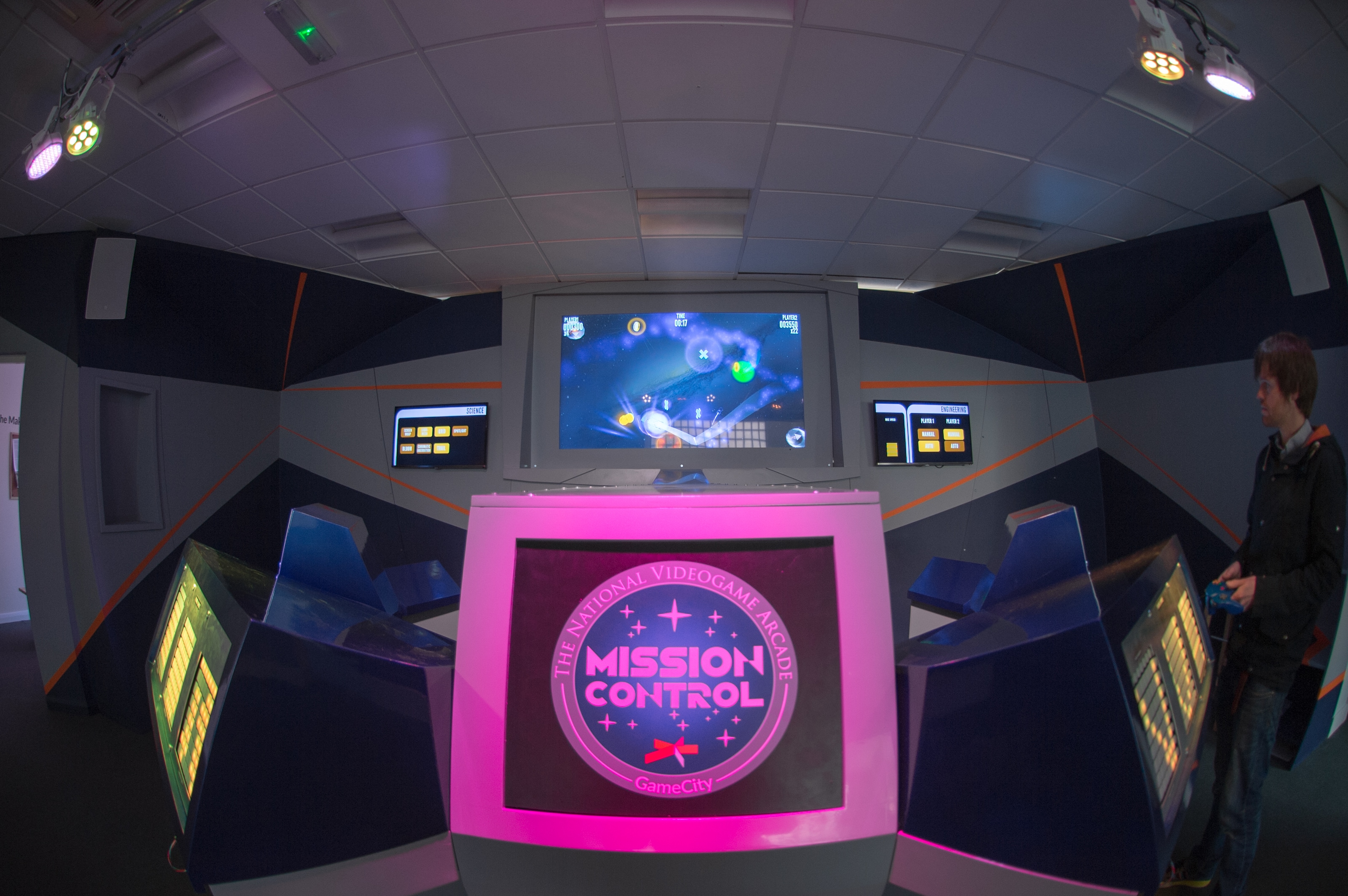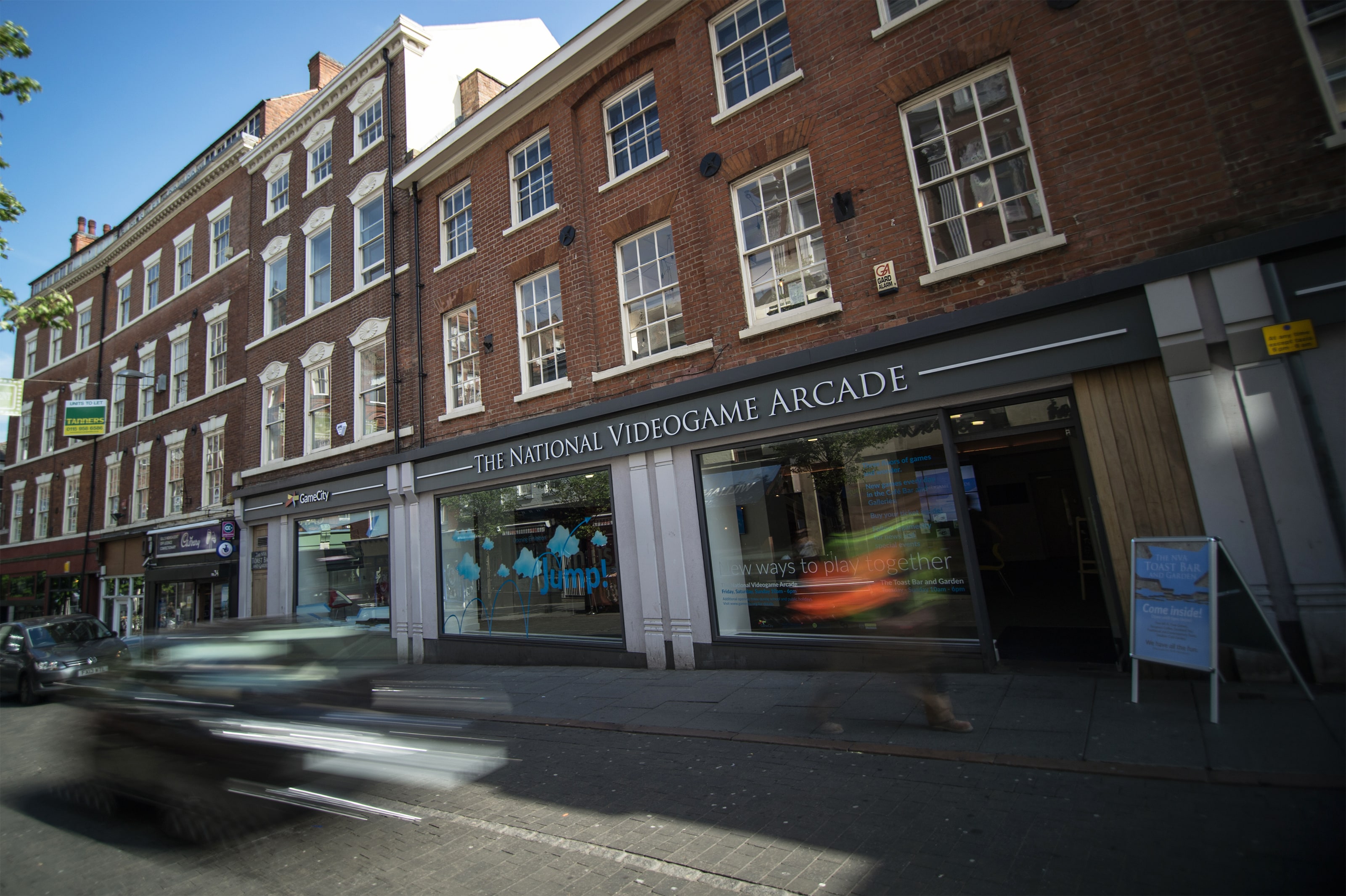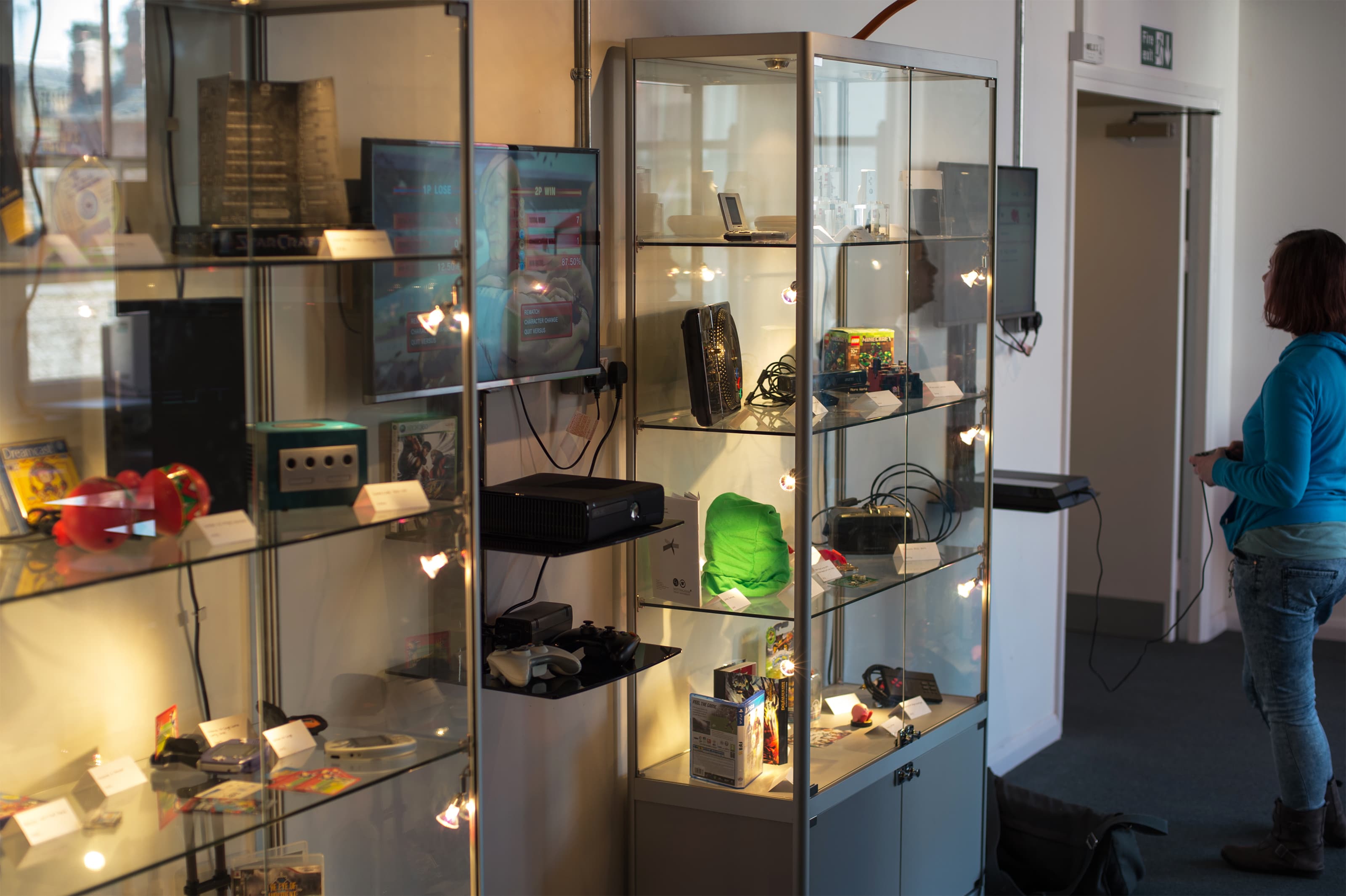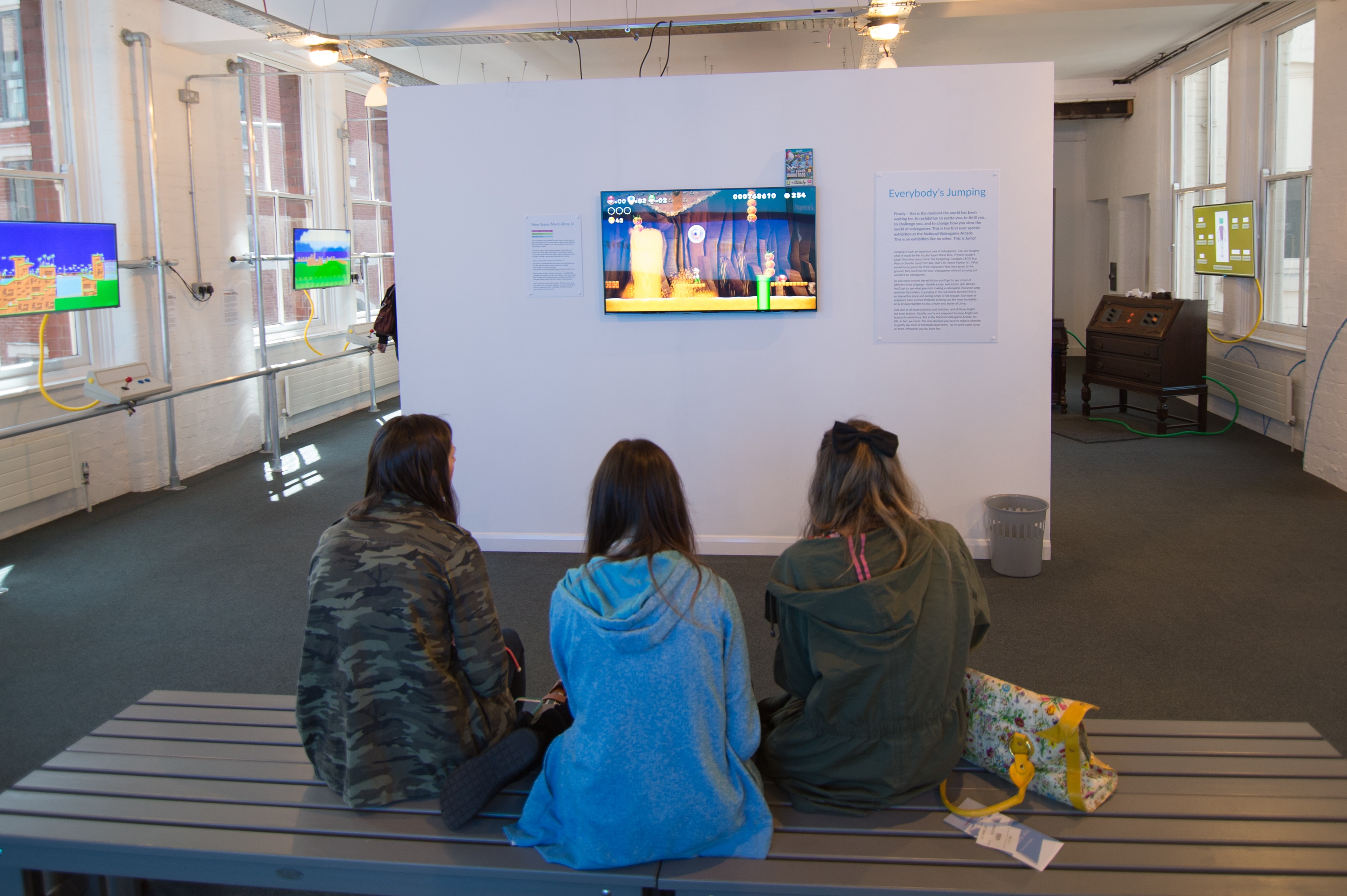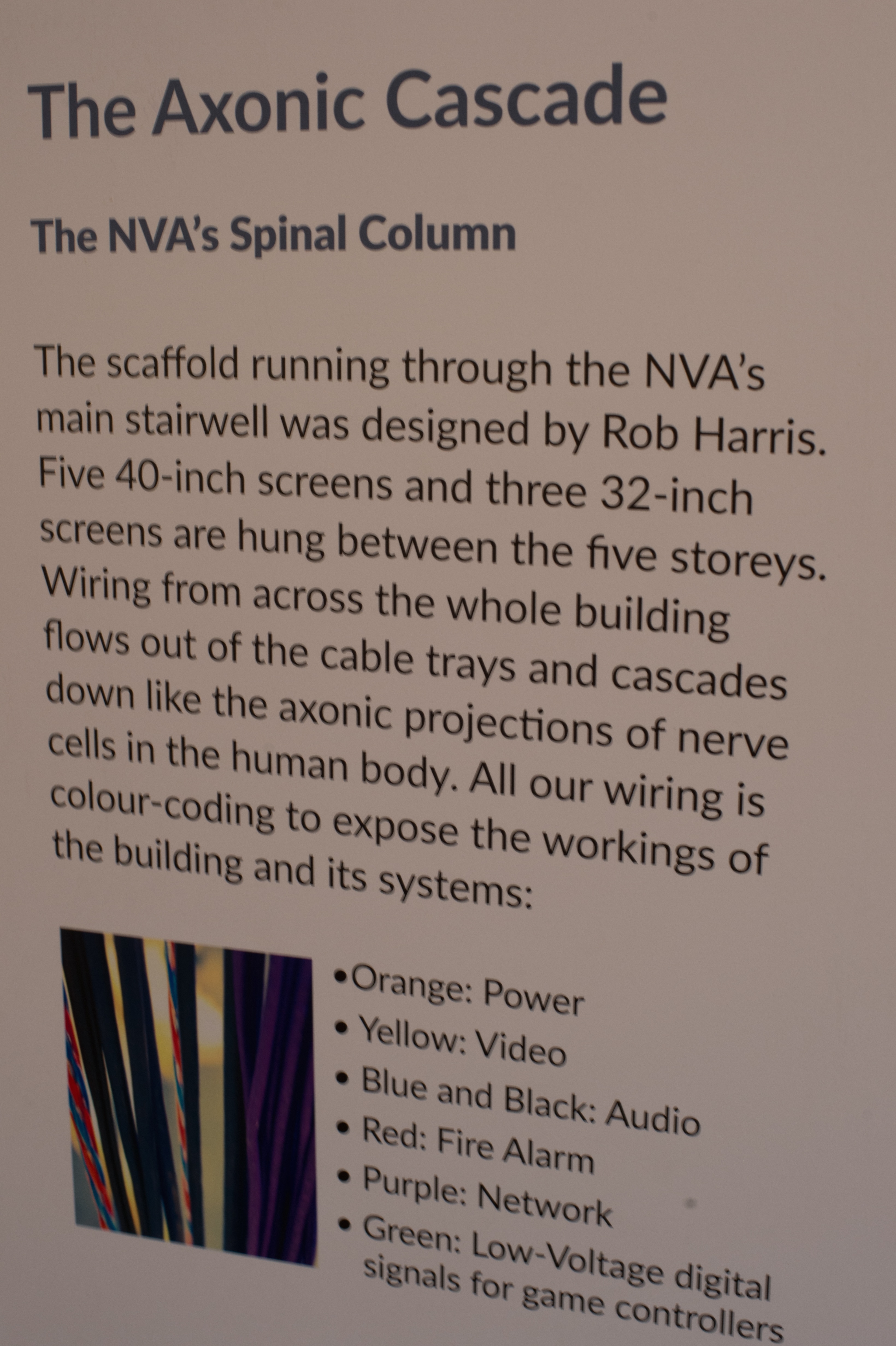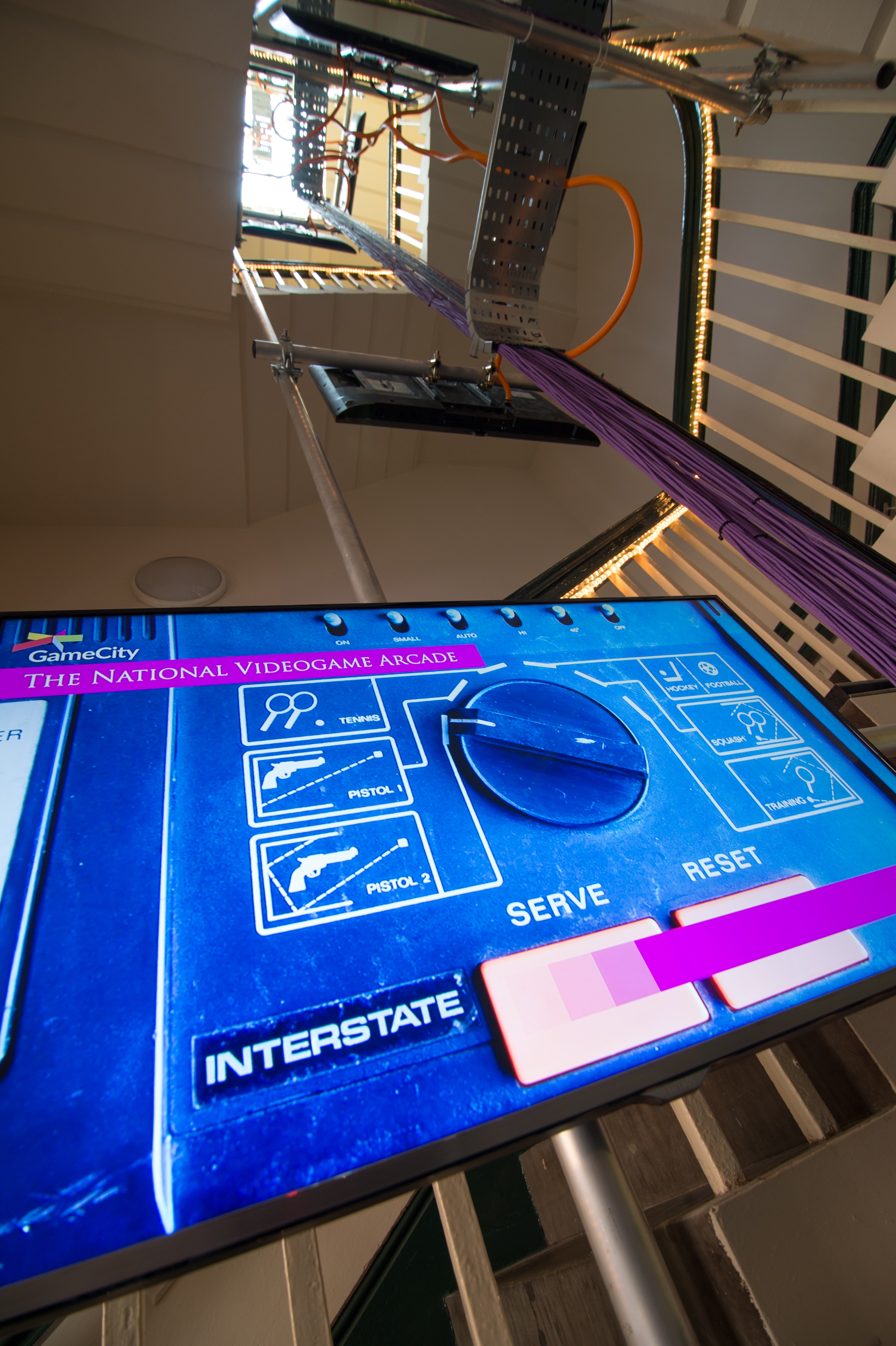Flexible Yamaha CIS System Helps National Videogame Arcade To Educate And Entertain
-
Themed Entertainment
-
Distributed Audio & Public Address
The National Videogame Arcade (NVA) is an educational and entertainment resource like no other. Designed with the twin aims of encouraging young people into the hands-on world of programming/game design and being a museum for a genre of entertainment embedded in society since the 1970s, the project demanded a highly versatile, yet simple to use, technical infrastructure. System designer / installer Rob Harris used Yamaha Commercial Installation Solutions (CIS) products to deliver a highly innovative solution.
From memories of playing Pong on a black and white television and Space Invaders in arcades to immersion in the latest online ‘shoot ‘em up’, video gaming has been a pastime for millions for over 40 years and is an ever-expanding, multi-billion dollar business.
Created as a part of CQ Connect, a European Regional Development Fund-funded programme, the NVA is located close to Nottingham city centre and is backed by the Nottingham Trent University, the City Council and Confetti Institute of Creative Technology. It features four floors of playable galleries and a warren of 7rooms and corridors, as well as a cinema, café and lecture/event space - in all covering over 3,000m2.
“It's a complicated building, basically in two halves with a courtyard in the middle, with each having a variety of different spaces and corridors. We needed a system that would effectively route any audio to any room or combination of rooms, but one of the fundamental remits of the design was that the whole system had to be controllable by non-technical users,” says Rob.
“I was familiar with Yamaha’s DME series digital mixing engines and, having looked at the CIS series, realised they were the only products capable of delivering what was needed.”
The ‘heart and mind’ of the system is a pair of Dante-networked MTX5-D matrix mixers, two redundant network switches, two XMV4280-D and two XMV 8280-D power amplifiers, which drive over 70 Yamaha speakers including VXC ceiling models, VS4, VS6, VXS5 and VXS8 full range units, plus a selection of VXS10ST subs, all in a mixture of 70v, 100v, 8 ohm and 4 ohm configurations. Straightforward system control comes from six wall-mounted DCP4V4S wall-mounted units. An additional three PA2030 power amplifiers drive systems in breakout teaching spaces and the system also integrates with some existing A/V technology.
The versatility of the Yamaha equipment meant that Rob could devise and install a highly complex system to satisfy the venue’s requirements, but make the whole thing very easy to control.
“The combination of the MTX5-Ds and XMV amplifiers is so much better than anything else available, it's on a different level. Everything is so configurable, which not only delivered the required flexibility, but also meant we could successfully deliver full system control via the rotary and pushbutton controls of the DCP4V4S units,” he says.
The first requirement was for the two sides of building to be capable of being run independently, connected by effectively a redundant Dante ‘digital bus’ between the two parts. In addition, the YDIF I/O is used for internal system bussing and additional routing This means that different levels of background music can be running in each zone, without affecting the overall system volume setting. But, at the same time, the system is closely tied in with the building’s fire alarm system, which of course has to sound at a pre-set volume in all areas, This is just the start, however. Matters are significantly complicated by, firstly, in addition to the 100v line ceiling speakers installed throughout for the main system, many rooms feature mic/line inputs and pairs of 8 ohm VXS loudspeakers for - as Rob puts it - “more heavyweight stuff when needed.” And, secondly, the requirement to broadcast audio from any input source in the building to any of the loudspeakers in any other area… or combination of areas.
“The physical inputs in each area are almost like stage ties in a venue. To achieve this, the system has a lot of analogue patching deeply integrated with the digital network,” says Rob. “For example, a presentation can be done in one area using the local inputs and its 8 ohm loudspeakers, but the audio can be also routed anywhere, if required.
“Another example is that there’s a local panel in the café, to quickly plug a microphone in to make an announcement and have a local iPod for background music. Yet, at the same time, that announcement and/or music can be routed to anywhere else in the entire complex.
“There is also an announcement mic in reception, which can address the entire building. We used every single ducker in the system to achieve that,” he adds with a grin. “The whole remit was to be super-flexible, with the ability to quickly patch anything in.”
This was complicated by the need for any requirement to be easily managed by non-technical members of staff - or even visitors.
“The system has so many different uses that a huge amount of processing is needed. People think that pressing a button on one of the DCP4V4S wall units is just switching a microphone on and off, but it’s also causing the system to set compressors, EQ, gain levels, inputs, outputs and so on. And that’s all going on behind the scenes, without anybody being aware of it,” says Rob. “Nearly all the available sends, Dante channels and DSP are being used. The system is also fully redundant and has facilities like automated, scheduled overnight amplifier shutdowns and switchovers.” “It is also configured so I can do most of the technical support remotely. I have secure access and, on one occasion, configured the system for an event on my iPhone while sat in the pub.”
Although all the system’s DSP and routing is done in the background, the educational remit of the NVA has meant that all the technical infrastructure and wiring is deliberately kept out in the open. Dubbed the Axonic Cascade, the wiring is colour coded for its different uses and visitors are encouraged to observe it, likening its routes to nerves in the human body.
“The technical systems - power, audio, video, fire alarm, networking and so on are the lifeblood of the building. Having it all visible means we can explain how it works in a relatable way to visitors, helping them to understand the principles of networks and programming,” says Rob.
The flexibility of the CIS equipment means that the system has plenty of potential for expansion, which will happen in due course. But for now the NVA is very happy with what Yamaha CIS equipment has made possible.
“The audio system is one of the things we’re proudest of about the building,” says Iain Simons, NVA co-founder. “Rob and Yamaha Commercial Audio Europe - plus around five miles of cabling - have delivered something remarkable.”
“It’s a very unusual system and I think it’s probably doing more in terms of processing and routing than any installation in any other venue I’ve been involved with. I'm really happy with how versatile and easy to use it is,” adds Rob. “We have teenagers who have never used a sound system before running events from small wall panels. Importantly, it also sounds great, - the speakers are really well voiced. And, despite the complexity, it has worked flawlessly from day one. As you’d expect from Yamaha, it’s really reliable.”




